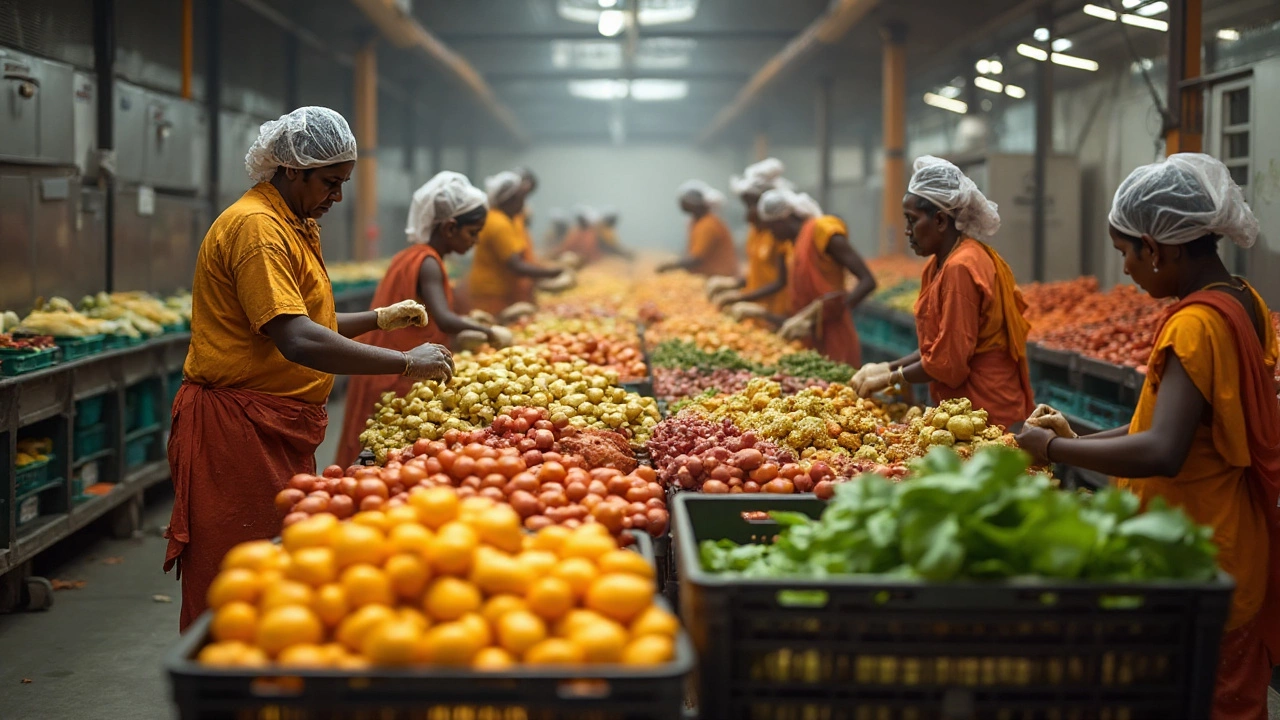- Global Giants in Manufacturing: Leaders Shaping the Future Feb 2, 2025
- Most Processed Foods: Surprising Facts and Their Global Impact Aug 6, 2025
- Daily Earnings of Food Trucks: Insights and Tips Jan 20, 2025
- Largest Textile City in India: Why Surat Tops the List May 4, 2025
- Who is the King of Textiles? Apr 16, 2025
Food Manufacturing Types: A Practical Overview
When you walk into a grocery aisle, the variety you see is the result of many different manufacturing approaches. Understanding these approaches helps you see why a product costs what it does, how long it stays fresh, and what standards it follows.
Bulk Processing and Conventional Production
Bulk processing is the workhorse of the food industry. Large facilities take raw ingredients—wheat, corn, sugar, meat—and turn them into staples like flour, oils, canned goods, and ready‑to‑eat meals. The focus here is speed and consistency. Automated lines, strict temperature control, and standardized recipes keep output steady and prices low. Because the same formula runs day after day, quality variations are minimal, which is why you can rely on a brand’s taste from one visit to the next.
Key steps in bulk processing include cleaning, sorting, grinding, cooking, and packaging. For example, a cereal plant will clean grains, steam‑cook them, shape them into flakes, and then seal the pack. Each step uses equipment designed for high volume, so the plant can produce thousands of packets per hour.
Specialty, Organic, and Niche Manufacturing
Specialty manufacturing caters to smaller, often premium markets. Think artisanal cheese, craft chocolate, or gluten‑free breads. These products usually involve fewer batches, more hand‑crafting, and higher ingredient quality. Manufacturers may source local farms, use unique fermentation methods, or apply rare spices. Because the scale is smaller, the cost per unit rises, but the flavor and story often justify the price.
Organic manufacturing follows strict certification rules. Farmers cannot use synthetic pesticides, and processors must keep organic and non‑organic streams separate. This adds paperwork and careful cleaning of equipment, which again bumps up costs. However, consumers looking for clean labels are willing to pay extra, driving growth in this segment.
Niche manufacturing also includes functional foods—products fortified with vitamins, probiotics, or protein. Companies blend these additives during processing and then test each batch for potency. The extra testing ensures the health claim holds true, and it differentiates the product on crowded shelves.
Frozen, Ready‑to‑Cook, and Convenience Lines
Frozen foods use quick‑freeze technology to lock in flavor and nutrition. The process starts with cooking or blanching, then the product is cut into portions, and finally it passes through a blast freezer that brings the temperature down to –18°C within minutes. This rapid chill prevents ice crystals from forming, which would otherwise damage texture.
Ready‑to‑cook (RTC) items—like pepperoni pizza kits or stir‑fry mixes—combine the convenience of frozen foods with ingredients that stay fresh a bit longer. Manufacturers partial‑cook components, then vacuum‑seal them with sauces or seasonings. The consumer finishes the cooking at home, saving time while preserving taste.
Convenience lines also cover snack bars, single‑serve drinks, and pre‑packed salads. These products rely on aseptic packaging, which sterilizes food and the container separately before sealing. This method extends shelf life without refrigeration, making distribution easier and reducing waste.
Why Knowing Manufacturing Types Matters
Each manufacturing type impacts price, nutrition, and environmental footprint. Bulk processing usually means lower cost but also more packaging waste. Specialty and organic lines often use sustainable sourcing but carry higher price tags. Frozen and RTC products help reduce food waste by extending shelf life, yet they require energy‑intensive freezing.
For manufacturers, picking the right method means balancing market demand, regulation, and profit margins. For shoppers, it means you can make smarter choices—whether you chase price, quality, or sustainability.
Now that you know the main food manufacturing types, you can read labels with confidence and understand why certain products taste or cost the way they do. The next time you grab a snack, you’ll see the story behind its production.
Diverse Fields of Food Processing: Key Sectors and Innovations Explained
- Aarav Sekhar
- Aug 3, 2025
Explore every corner of food processing—preservation, dairy, beverages, frozen foods, meat, snacks, and cutting-edge tech. Get real-world insights and tips that actually matter.
